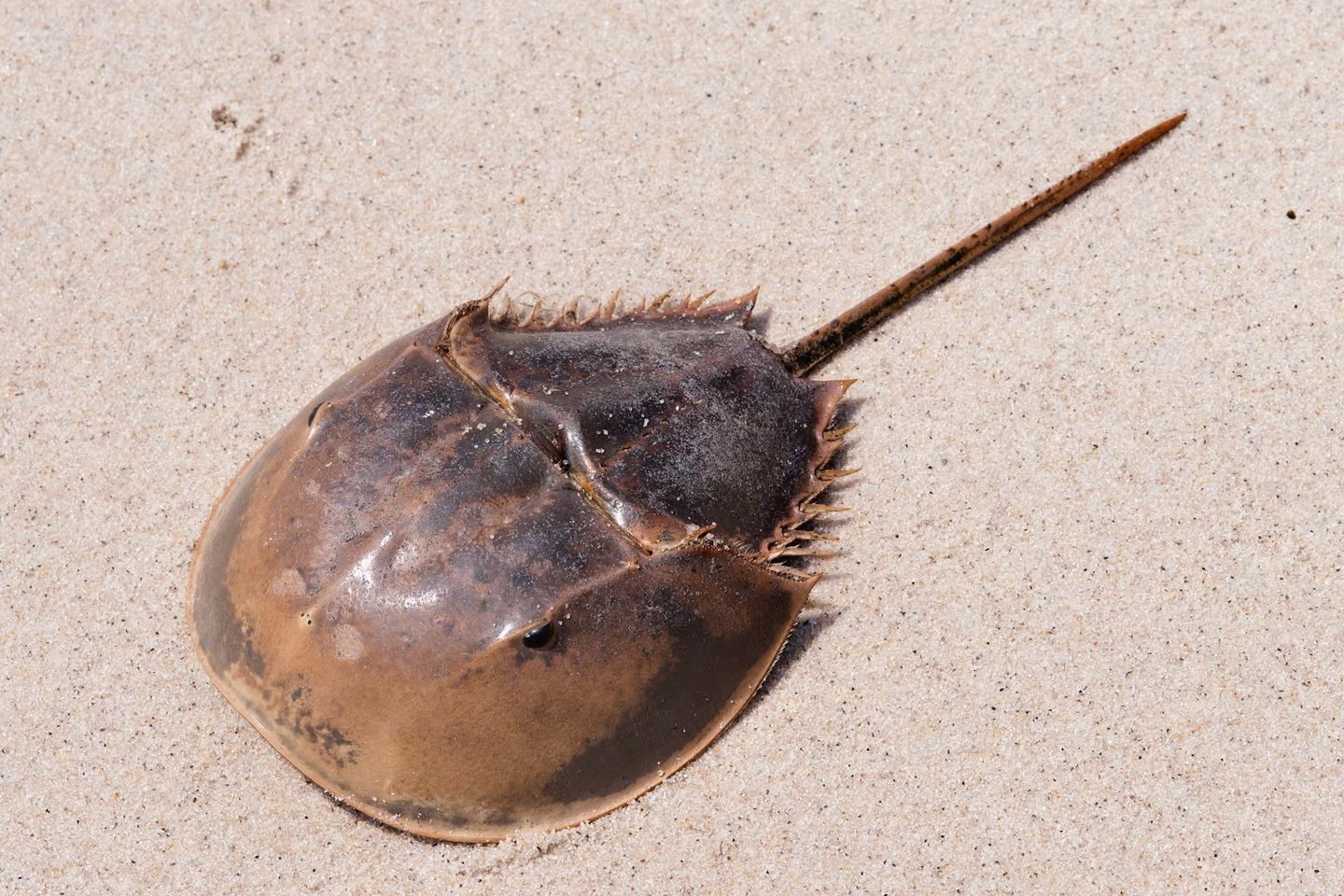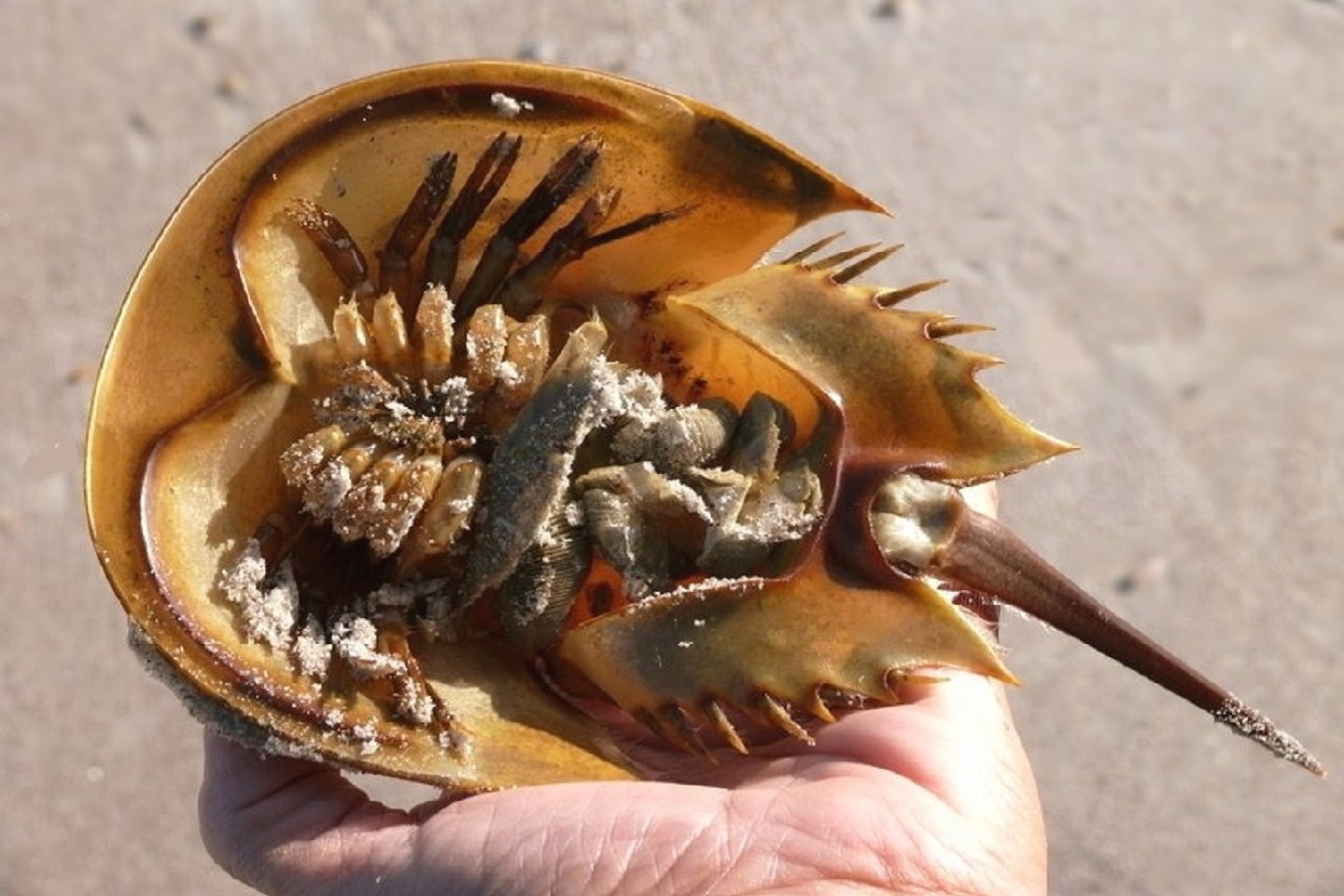
Horseshoe Crabs are some of the most alien-looking creatures you’re likely to see on Fire Island and Great South Bay, and they’re truly ancient!
It’s difficult to grasp just how old these “living fossils” are. Cast your mind back a thousand years to when the Normans invaded England or to the first use of gunpowder. Now visualize something a thousand times a thousand years old, back to a time a million years ago when humans weren’t even a distinct species.
Horseshoe crabs are 450 times older than that, a nearly incomprehensible length of time. Horseshoe crabs were ancient even from the perspective of the dinosaurs. And yet we know from the fossil record that they’ve barely changed at all. Now that’s longevity!
Horseshoe crabs are marine arthropods, and despite their name they are not true crabs but belong to a distinct group of creatures. There are four species, three of them live in Asia, around the coasts of India, Vietnam, China, Borneo and southern Japan. These are the tri-spine horseshoe crab (Tachypleus tridentatus), the coastal horseshoe crab (Tachypleus gigas) and the mangrove horseshoe crab (Carcinoscorpius rotundicauda).
The fourth is the American horseshoe crab (Limulus polyphemus), which lives along the east coast of North America, including large populations in many east coast waters, including the Delaware and Great South bays.
Their distinct horseshoe-shaped carapace encloses their body and serves as a protective shield. They have a long, pointed tail and multiple pairs of walking legs. They also have large and remarkably sophisticated compound eyes, which is all the more remarkable given their age. And they can endure extreme temperatures, salinity fluctuations, and even oxygen-deprived conditions.
Human blood is red because our hemoglobin – the protein in red blood cells that transports oxygen – contains iron. Horseshoe crabs have a different oxygen-carrying protein, called hemocyanin. Hemocyanin uses copper rather than iron, which gives horseshoe crab blood a bright blue color. Octopus blood is also based on copper and appears blue, and that gives the blood of both creatures some remarkable properties…

Their blood contains a substance called Limulus amebocyte lysate (LAL), which has a unique ability to detect bacterial endotoxins. LAL is widely used in the pharmaceutical industry to ensure the safety of vaccines, medical devices, and injectable drugs.
Research on horseshoe crabs extends beyond medical applications. Scientists study their reproductive behavior, migratory patterns, and neurological systems to gain insights into various biological processes.
Although the American horseshoe crab is not considered endangered, it is classified as vulnerable on the IUCN Red List of Threatened Species, so the number of crabs caught is monitored. Some pharmaceutical companies have started sustainability programs that rescue eggs from crabs that have been caught for bait. The eggs are fertilized, raised in a hatchery and released back into the ocean to try to keep population numbers stable. Regulators have also created guidance on how to reduce the number of crabs killed during the bleeding process, which is helping. Some crab populations are now increasing, although others are still struggling.
One of the horseshoe crab’s significant contributions lies in their feeding behavior. By scavenging organic debris, they clean and maintain the health of coastal areas. Furthermore, horseshoe crabs serve as a crucial food source for various marine organisms. Migratory shorebirds rely on horseshoe crab eggs as a critical fuel source during their long-distance journeys. The mass spawning events of horseshoe crabs provide an abundant and nutritious food supply for these birds, ensuring their survival.
Horseshoe crabs face several challenges that necessitate conservation efforts. Habitat loss due to coastal development, pollution, and climate change threatens their populations. As coastal areas become more developed, crucial spawning and feeding grounds are compromised. Consequently, many regions have established protected areas and regulations to safeguard horseshoe crab populations during spawning events.
Education and public engagement are critical components of horseshoe crab conservation. By promoting responsible beach practices, such as not disturbing horseshoe crab nesting sites, beachgoers can contribute to their protection.
So, the next time you’re walking along the beach or bay and encounter a horseshoe crab, give it a little respect: they’ve been here for vastly longer than we have, and who knows, maybe they’ll outlive us.
For commercial and individual horseshoe crab limits, and shellfish area closures, visit www.dec.ny.gov.



























